Amethyst is a beautiful and popular gemstone that can add elegance to any piece of jewelry. However, like all gemstones, it is vulnerable to scratches, which can detract from its appearance. Fortunately, there are ways to remove scratches from amethyst and restore its natural luster.
In this article, we will discuss how to remove scratches from amethyst, including assessing the severity of the scratches, cleaning the stone, removing minor surface scratches, dealing with deeper scratches, and polishing and finishing to restore its luster. Additionally, we will provide tips for preventing future scratches and maintaining your amethyst jewelry.
Key Takeaways:
- Amethyst is vulnerable to scratches, which can detract from its appearance.
- Assess the severity of the scratches before attempting to remove them.
- Clean the stone gently before attempting to remove scratches.
- Minor surface scratches can be removed at home with simple methods.
- Deeper scratches may require professional repair.
- Polish and finish the stone to restore its natural luster.
- Prevent future scratches by storing amethyst separate from other jewelry and avoiding harsh chemicals.
Understanding Amethyst and Its Vulnerability to Scratches
Amethyst is a popular gemstone known for its beauty, durability, and spiritual properties. However, it is not completely immune to scratches and damage. Understanding the chemical and physical properties of amethyst can help you take better care of your precious stones and prevent scratches.
Amethyst is a variety of quartz, which means it has a hardness rating of 7 on the Mohs scale. This rating suggests that amethyst is relatively hard and scratch-resistant compared to other gemstones. However, it is important to note that scratches can still occur due to external factors such as impact, friction, and exposure to harsh chemicals.
| Pros of Amethyst | Cons of Amethyst |
|---|---|
| Hardness rating of 7 on the Mohs scale | Can still get scratched despite its relative hardness |
| Available in a range of colors, from pale lilac to deep purple | Can fade or lose color over time due to exposure to sunlight or heat |
| Believed to have spiritual and healing properties | May contain inclusions or other imperfections that affect clarity and value |
If your amethyst has scratches or damage, it is important to take action to restore its beauty and protect its value. The next section will cover how to assess the severity of scratches on amethyst and determine the best course of action.
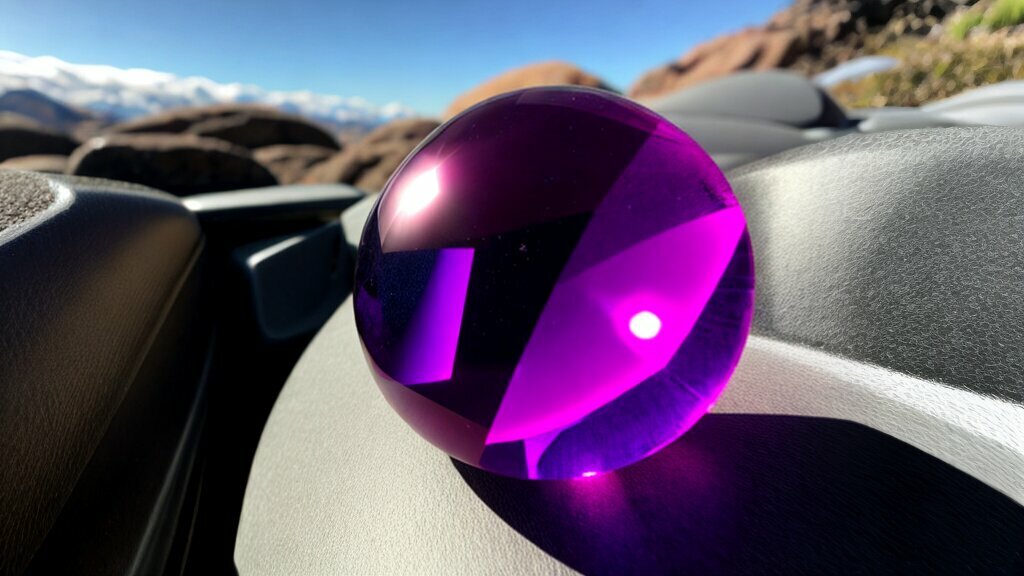
Assessing the Severity of Amethyst Scratches
Before attempting any repair on your scratched amethyst, you need to determine the severity of the scratches. Light surface scratches are straightforward to repair and can be tackled with gentle cleaning and polishing techniques. On the other hand, deeper scratches require more attention and may be beyond the scope of DIY repair.
To assess the severity of the scratches, use a magnifying glass or loupe to inspect the stone. If you can see scratches that are deep enough to catch your fingernail, then you are dealing with serious damage. In such cases, it is best to take your amethyst to a professional jeweler for repairs.
| Severity of Scratches | Action Required |
|---|---|
| Superficial Surface Scratches | DIY repair methods |
| Deeper Scratches | Professional repair recommended |
Keep in mind that some gemstones may have natural inclusions or blemishes that can be mistaken for scratches. Therefore, it is essential to have your amethyst inspected by a professional if you are unsure about the nature of the damages.
Once you have assessed the severity of the scratches, you can proceed with the appropriate actions to restore your amethyst’s beauty. In the next section, we will discuss gentle cleaning techniques that should be your first step in removing scratches from amethyst.
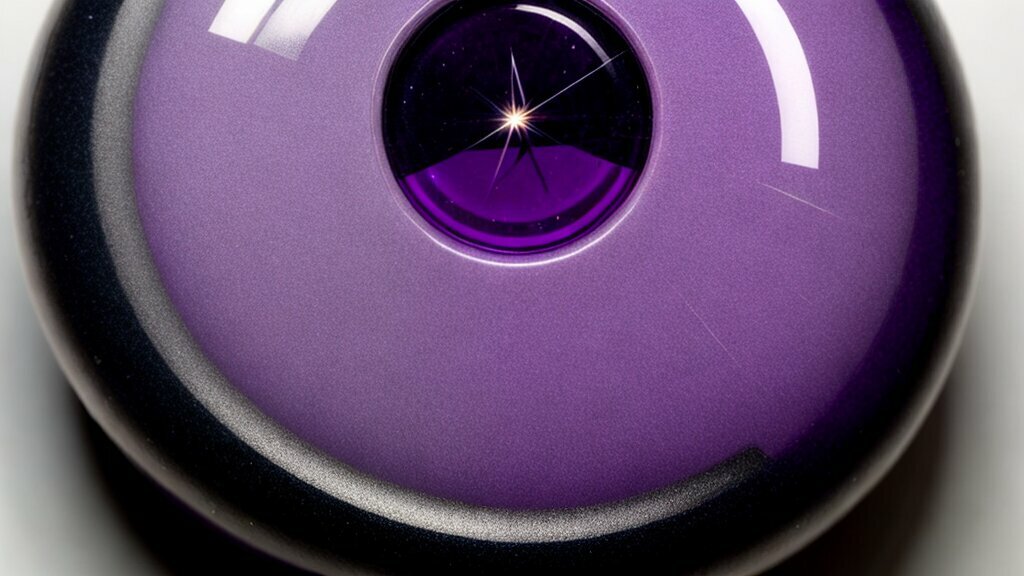
Gentle Cleaning as the First Step in Scratch Removal
Before attempting to remove scratches from your amethyst, it’s crucial to ensure the gemstone is properly cleaned. Even the smallest particles of dirt or debris can further damage the surface of the stone during the scratch removal process.
Start by rinsing your amethyst under warm running water and gently patting it dry with a soft, lint-free cloth. Avoid using any harsh chemicals or abrasive materials, as these can cause more harm than good.
If your amethyst requires more intensive cleaning, consider using a mild soap solution. Mix a few drops of a gentle dish soap in a bowl of warm water and soak your amethyst for a few minutes. Afterward, rinse with warm water and pat dry with a soft cloth.
Once your amethyst is clean and dry, you can move on to assessing the severity of any scratches present on its surface.
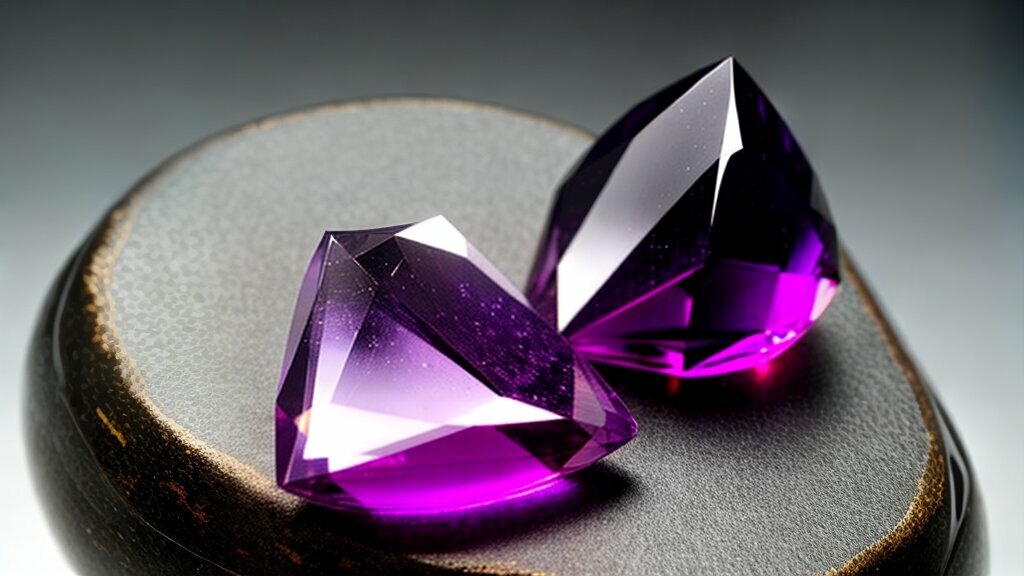
Removing Minor Surface Scratches from Amethyst
If your amethyst has minor surface scratches, you can try removing them yourself with a few simple tools and techniques. Here’s how:
Step 1: Clean the Amethyst
Before attempting to remove scratches, you need to clean the amethyst. Use a soft cloth or brush to remove any dirt or debris, and then rinse it with warm water.
Step 2: Apply Toothpaste or Baking Soda
Apply a small amount of toothpaste or baking soda to the scratched area. Using a soft-bristled toothbrush, gently rub the toothpaste or baking soda in a circular motion over the scratches.
Note: Only use plain white toothpaste or baking soda. Avoid using any toothpaste or baking soda that contains abrasive particles or gels, as these can cause further damage to the amethyst.
Step 3: Rinse and Dry
Rinse the amethyst with warm water and dry it with a soft cloth. Check to see if the scratches have been removed. If not, repeat the process until the scratches are no longer visible.
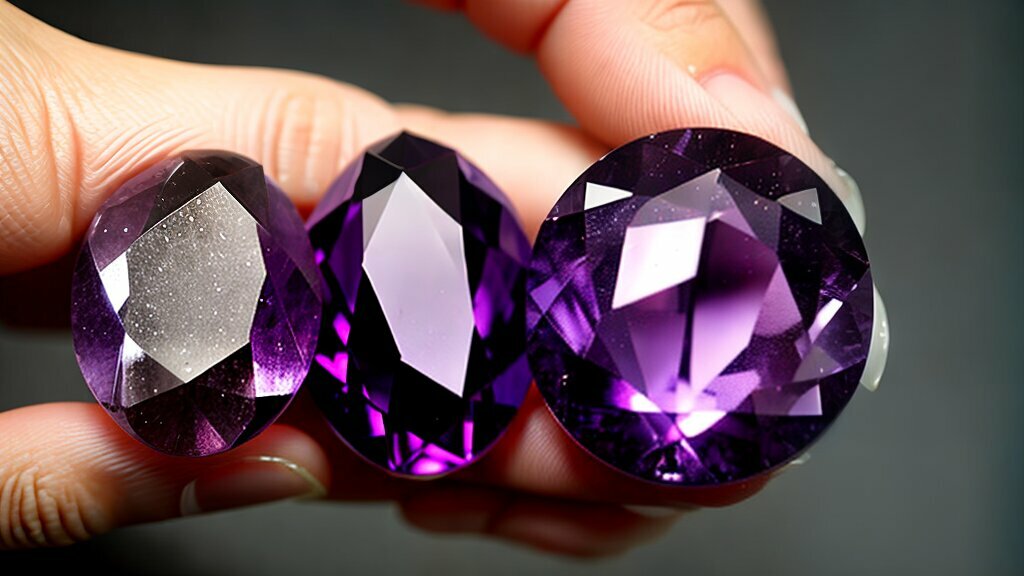
Step 4: Buff with Microfiber Cloth
Once the scratches are gone, buff the amethyst with a microfiber cloth to restore its shine.
If the scratches on your amethyst are deep or extensive, it’s best to take it to a professional for repair.
Dealing with Deeper Scratches on Amethyst
If the scratches on your amethyst gemstone are deeper, you may need to take more drastic action to restore its appearance. It’s important to note that deeper scratches cannot be removed completely, but they can be significantly reduced in visibility.
You’ll need to start by using a diamond file or sandpaper with a 240 grit to carefully sand down the scratched area. It’s important to use a light touch and go slowly, checking the progress frequently to avoid accidentally removing too much of the amethyst.
Once you’ve sanded the area down, switch to a finer grit sandpaper with 600 grit to 800 grit and continue sanding until the scratches become less visible. As a final step, use a polishing cloth or a polishing compound to bring back the shine to your amethyst.
Keep in mind that this process is more challenging than removing minor surface scratches, and if you’re not confident in your abilities, it’s best to seek professional help from a jeweler or a gemstone expert.
It’s also worth noting that if your amethyst is an antique or a particularly valuable piece, it’s important to consult with an expert before attempting any scratch removal or polishing, as you risk damaging the piece and decreasing its value.
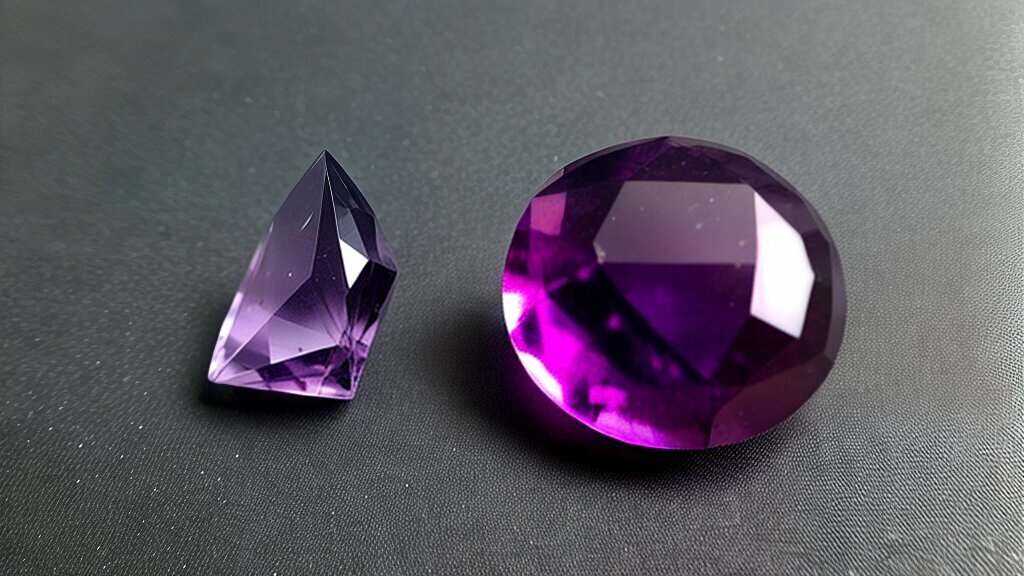
Polishing and Finishing to Restore Amethyst’s Luster
If your amethyst has deeper scratches that cannot be removed by gentle cleaning, it’s time to move on to polishing and finishing to restore its luster. This process will require a few additional tools, but the results can be remarkable.
Start by creating a mixture of baking soda and water to form a paste with a thick consistency. Gently rub the paste onto the scratched area using a soft cotton cloth. You can also use a soft-bristle toothbrush to apply the paste and reach deeper scratches. Be sure to avoid getting the paste on any surrounding metal parts if your amethyst is set in jewelry.
| Tools You’ll Need: | Materials You’ll Need: |
|---|---|
|
|
After applying the baking soda paste, rinse the amethyst with lukewarm water and dry it with a soft cloth. Next, use jeweler’s rouge on a soft cotton cloth or buffing wheel to polish the scratched area. Apply firm pressure and continue to polish until the desired shine is achieved. Be careful not to over-polish, as this can remove too much material and change the shape of the amethyst.
For deeper scratches that are difficult to remove, you may need to use a Dremel rotary tool with a polishing attachment. Use a low speed setting and apply light pressure, being careful not to overheat the amethyst. Repeat this process until the scratches are no longer visible.
Remember to clean and dry your amethyst thoroughly after polishing, and avoid exposing it to harsh chemicals and high temperatures. With proper care and maintenance, your amethyst can continue to shine for years to come.

Gentle Cleaning as the First Step in Scratch Removal
Before attempting to remove scratches from your amethyst, it is essential to clean it gently. Use a soft cloth or a soft-bristled brush to remove any dirt or debris that might scratch the stone further. Avoid using harsh chemicals or abrasive cleaners as they can damage the amethyst’s surface.
If your amethyst has any grease or oil stains, use warm soapy water to clean it. Mix a mild soap with warm water and soak your amethyst for a few minutes. Then, gently rub it with a soft-bristled brush to remove the stain. Rinse the stone thoroughly with clean water and dry it with a soft cloth.
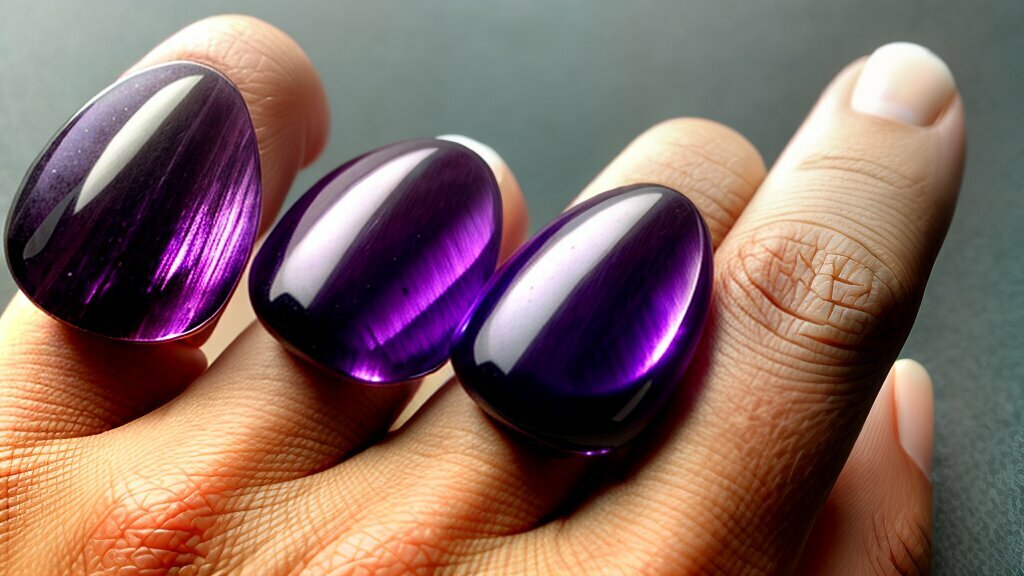
Note: If your amethyst is part of a piece of jewelry, remove it from the setting before cleaning it. Clean the amethyst separately and avoid getting water or soap on any other materials that might be part of the jewelry.
Additional Considerations and Expert Advice
While amethyst is a beautiful and durable gemstone, proper care and maintenance are key to keeping it scratch-free and lustrous. Here are some additional tips and expert advice to help you maintain your amethyst:
Be Mindful of Chemicals
Amethyst is sensitive to harsh chemicals, which can damage its surface and cause scratches. Avoid exposing your amethyst to chemicals such as bleach, ammonia, and even some common household cleaners. Instead, use mild soap and warm water to clean your gemstone.
Store Your Amethyst Carefully
When not wearing your amethyst jewelry, store it in a soft cloth or pouch to protect it from scratches and other damage. Be sure to keep your amethyst away from harder gemstones, such as diamonds, which can scratch its surface.
Consult a Professional
If your amethyst has deep scratches or damage that you are unsure of how to repair, it may be best to consult a professional jeweler. They can assess the damage and recommend the best course of action, whether it be a simple repair or a more involved restoration process.
Consider Prevention
The best way to deal with scratches on amethyst is to prevent them from happening in the first place. Be mindful of how you wear your amethyst jewelry and avoid wearing it during intense physical activities or while doing chores. By taking preventative measures, you can help ensure that your amethyst remains scratch-free and beautiful for years to come.
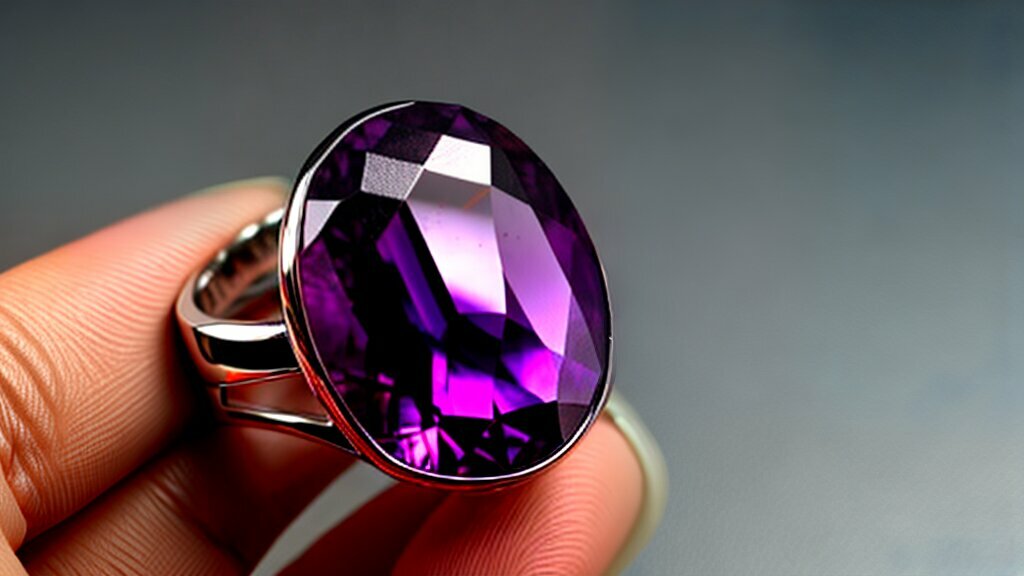
Remember, proper care and maintenance are crucial to the longevity of your amethyst. By following the tips and advice provided in this article, you can keep your amethyst looking its best and prevent scratches from occurring. With a little effort and attention, your amethyst can remain a beautiful and cherished gemstone for years to come.
Conclusion
Now that you have learned how to remove scratches from amethyst, you can restore the luster of your beloved gemstone with ease. Understanding the vulnerabilities of amethyst and assessing the severity of scratches are the first steps towards restoration. Remember to start with gentle cleaning techniques before moving on to deeper scratch removal methods.
For minor surface scratches, you can try DIY solutions at home using household items. However, for deeper scratches, it’s best to seek professional help to avoid causing further damage to the stone. Once the scratches have been removed, polishing and finishing techniques can help restore the amethyst’s shine.
To prevent future scratches, it’s important to be cautious when wearing your amethyst jewelry. Avoid exposing it to hard surfaces or chemicals that may damage the stone. Regular cleaning and maintenance will help keep your amethyst looking its best.
If you have any doubts or concerns about amethyst care, don’t hesitate to consult with an expert. By following these tips and taking proper care of your amethyst, you can enjoy its beauty for years to come.
FAQ
Q: How can I remove scratches from amethyst?
A: To remove scratches from amethyst, it is important to understand the vulnerability of this gemstone and assess the severity of the scratches first. Start by gently cleaning the amethyst and then follow specific techniques based on the depth of the scratches. Polishing and finishing are also essential steps in restoring amethyst’s luster. Additionally, preventing future scratches and maintaining proper care of the amethyst can help prolong its beauty.
Q: What makes amethyst vulnerable to scratches?
A: Amethyst is a relatively soft stone, which makes it susceptible to scratches. It ranks 7 on the Mohs scale of hardness, meaning it is harder than some minerals but can still be scratched by others. It is important to handle amethyst with care and avoid exposing it to rough surfaces or chemicals that can damage its surface.
Q: How do I assess the severity of amethyst scratches?
A: Assessing the severity of amethyst scratches involves examining the depth and extent of the scratches. Light surface scratches are often easier to remove, while deeper scratches may require more intensive repair techniques. It is recommended to consult with a professional if you are unsure about the severity of the scratches or if the amethyst is of high value.
Q: What should be the first step in amethyst scratch removal?
A: The first step in removing scratches from amethyst is gentle cleaning. Use a soft cloth or a brush with soft bristles to remove any dirt or debris from the surface of the amethyst. This helps prepare the stone for further repair and ensures that the cleaning process does not worsen the scratches.
Q: How can I remove minor surface scratches from amethyst?
A: For minor surface scratches on amethyst, you can try DIY methods such as using a mixture of mild soap and warm water to gently clean the stone. If the scratches persist, you can use a polishing compound or a specialized amethyst scratch remover to buff the surface and restore its smoothness.
Q: How do I deal with deeper scratches on amethyst?
A: Deeper scratches on amethyst may require more advanced repair techniques. One option is to consult a professional gemstone cutter or jeweler who can evaluate the severity of the scratches and perform a re-cut or re-polish if necessary. Another DIY method is to use abrasive materials such as diamond paste or sandpaper with increasing grit levels to gradually reduce the depth of the scratches.
Q: What are the polishing and finishing techniques for restoring amethyst’s luster?
A: Polishing and finishing are essential steps in restoring the luster of amethyst. These techniques involve using specialized polishing compounds, polishing cloths, or even a jewelry polishing machine to gently buff the surface of the amethyst. This helps remove minor scratches and brings out the natural shine and brilliance of the stone.
Q: How can I prevent future scratches and maintain amethyst?
A: To prevent future scratches, it is important to store amethyst jewelry separately from other hard or abrasive objects. Avoid wearing amethyst jewelry during activities that may expose it to potential damage, such as sports or heavy manual labor. Regularly clean amethyst with mild soap and warm water, and consider re-polishing the stone periodically to maintain its luster.
Q: Are there any additional considerations or expert advice for amethyst care?
A: When caring for amethyst, it is important to avoid exposing the stone to extreme temperatures or sudden changes in temperature, as this can cause thermal shock and damage the gemstone. Additionally, be cautious when using ultrasonic cleaners or chemical solutions that may contain harsh ingredients. If in doubt, consult a professional jeweler for specific care recommendations based on the type and quality of the amethyst.

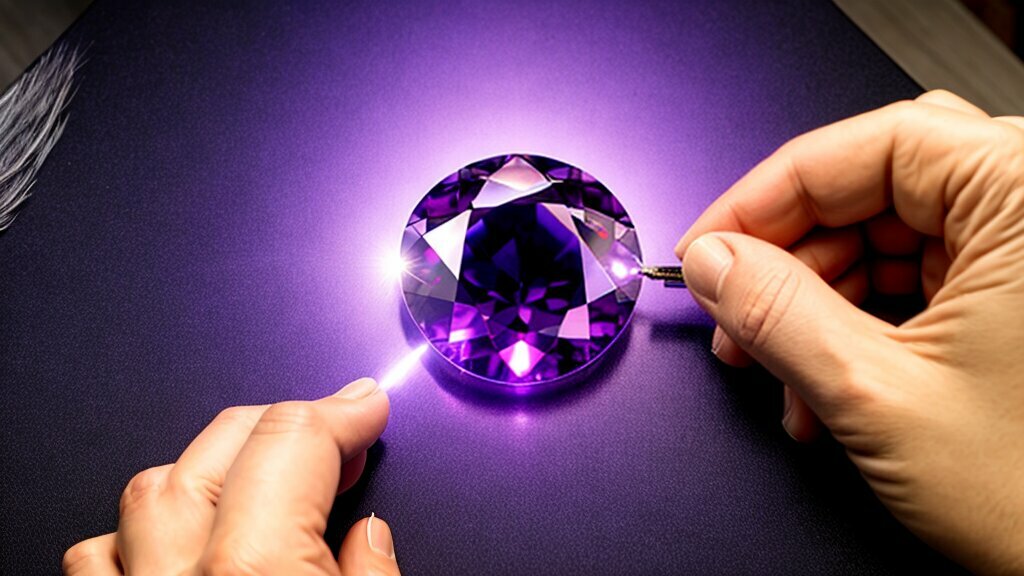
Leave a Reply